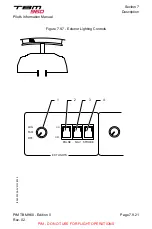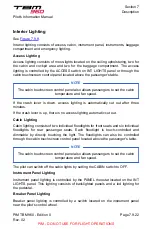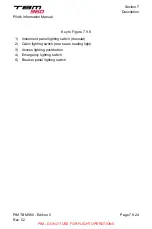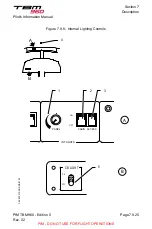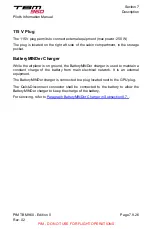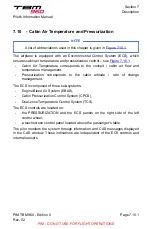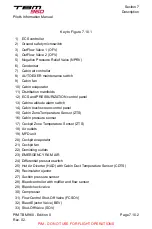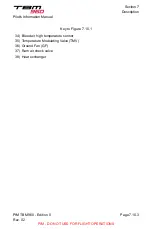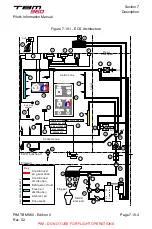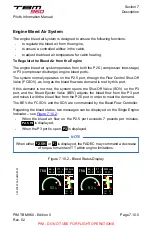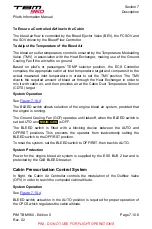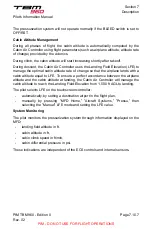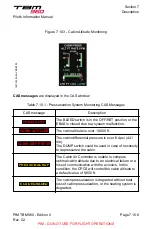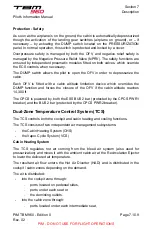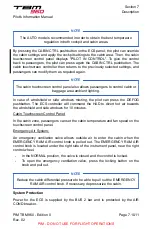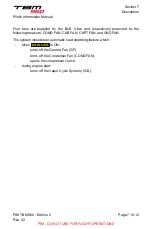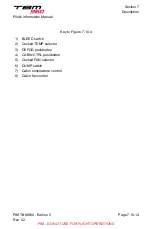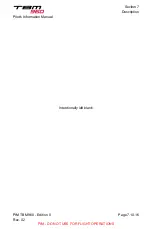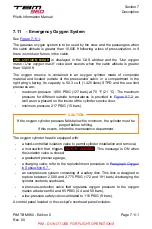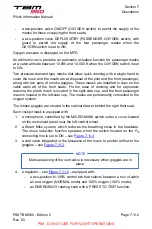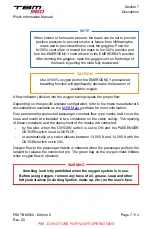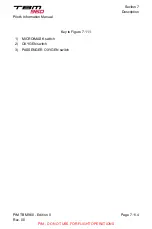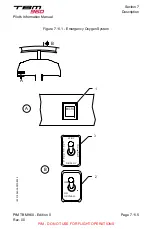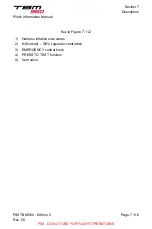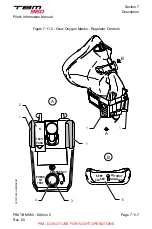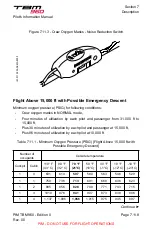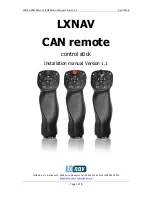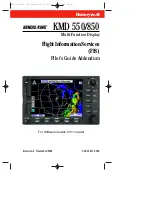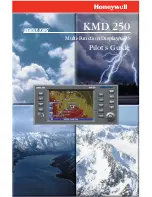
Protection - Safety
As soon as the airplane is on the ground, the cabin is automatically depressurized
though the activation of the landing gear switches (airplane on ground), or – if
necessary – by actuating the DUMP switch located on the PRESSURIZATION
panel. In normal operation, this switch is protected and locked by a cover.
Overpressure safety is managed by both the OFV, and negative relief safety is
managed by the Negative Pressure Relief Valve (NPRV). The safety functions are
ensured by independent pneumatic modules fitted on both valves, which override
the ECS controls when necessary.
The DUMP switch allows the pilot to open the OFV in order to depressurize the
cabin.
Each OFV is fitted with a cabin altitude limitation device which overrides the
DUMP function and forces the closure of the OFV if the cabin altitude reaches
14,300 ft.
The CPCS is powered by both the ESS BUS 2 bar (protected by the CPCS PWR1
breaker) and the BUS 2 bar (protected by the CPCS PWR2 breaker).
Dual-Zone Temperature Control System (TCS)
The TCS controls both the cockpit and cabin heating and cooling functions.
The TCS consists of two independent air management subsystems:
-
the Cabin Heating System (CHS)
-
the Vapor Cycle System (VCS)
Cabin Heating System
The TCS regulates hot air coming from the bleed air system (also used for
pressurization) and mixes it with the ambient cabin air at the Recirculation Ejector
to lower the delivered air temperature.
The resultant air flow enters the Hot Air Diverter (HAD) and is distributed in the
cockpit / cabin zones depending on the demand.
The air is distributed:
-
into the cockpit zone through:
.
ports located on pedestal sides,
.
ports under each seat or
.
the demisting outlets.
-
into the cabin zone through:
.
ports located under each intermediate seat,
Section 7
Description
Pilot's Information Manual
PIM TBM 960 - Edition 0
Rev. 02
Page 7.10.9
PIM - DO NOT USE FOR FLIGHT OPERATIONS

